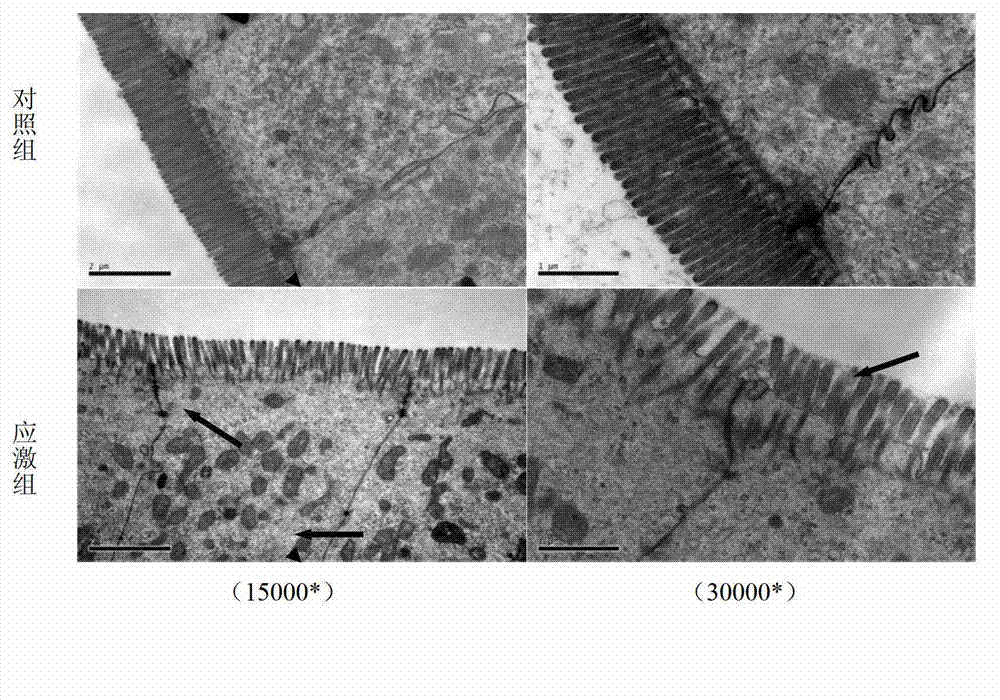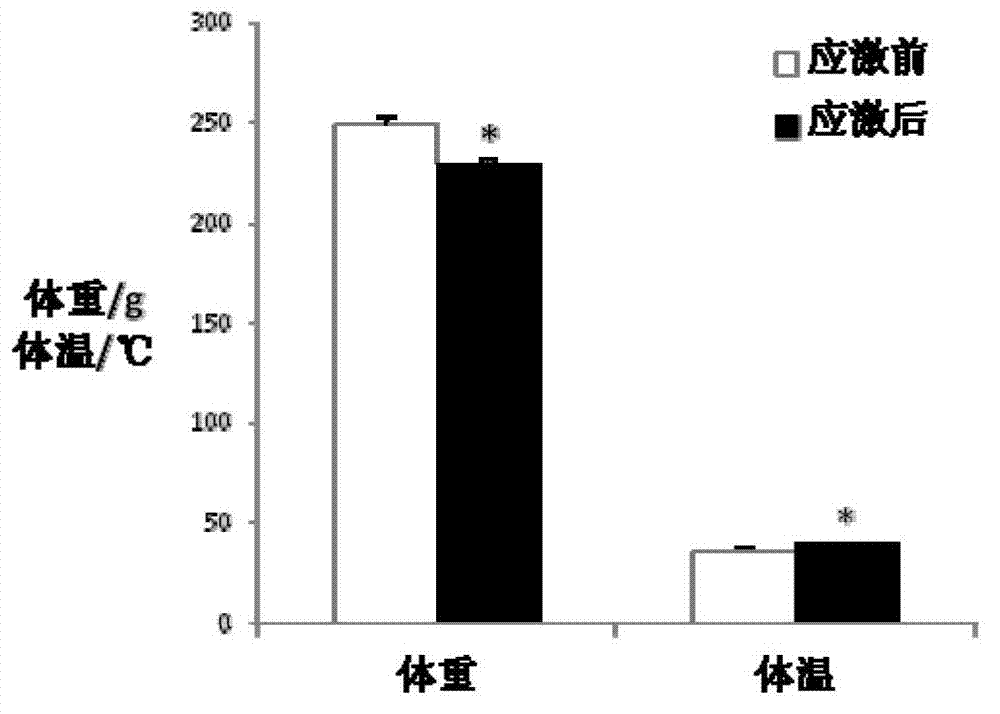Gene chip for evaluating transport stress model and application of gene chip for evaluating transport stress model
A transport stress and gene chip technology, which is applied in the field of gene chips for evaluating transport stress models, can solve the problems of unstable and precise indication of stress state, many influencing factors, and fast metabolism.
- Summary
- Abstract
- Description
- Claims
- Application Information
AI Technical Summary
Problems solved by technology
Method used
Image
Examples
Embodiment 1
[0056] The preparation of embodiment 1 gene chip
[0057] Regarding the preparation of the gene chip of the present invention, a general strategy as detailed below can be adopted.
[0058] 1. Slide processing
[0059] First, fully clean the glass slide, use 200mL of 25×NaOH solution and 300mL of 95% ethanol to make 500mL alkaline cleaning solution, thoroughly soak the glass slide in the cleaning solution for 2 hours, then rinse it with water for 5 times and soak the glass slide. In the water. The next step is to soak in poly-L-lysine solution, so that poly-lysine is evenly coated on the glass surface to form a poly-L-lysine coating. The specific method is to make 350mL poly-L-lysine soaking solution, soak the cleaned glass slides directly, keep shaking slowly during soaking, take them out after 1 hour, soak them in water for cleaning, and finally dry them. Generally, the coated glass slides are wrapped with tinfoil and left at room temperature for 1 month for aging to keep ...
Embodiment 2
[0068] Embodiment 2 The general strategy of the gene chip detection sample to be tested according to the present invention
[0069] 1. Labeling of samples to be tested
[0070] According to the different detected objects, select the specific sample to be tested, extract the nucleic acid sample according to the following method, and perform biotin labeling on the nucleic acid of the obtained sample to be tested.
[0071] RNA extraction method: (see Molecular Cloning: Experimental Guide, Chinese Third Edition, 2002, J. Sambrook et al., Huang Peitang et al., pp. 518-522); extract nucleic acid from the sample to be tested.
[0072] Biotin labeling: use the extracted nucleic acid as a template, use RT-PCR method to amplify, use RNA / T7-Oligo (dT) as a primer to synthesize double cDNA, then use cDNA as a template to synthesize cRNA, and use biotin-NTP for labeling .
[0073] 2. Hybridization of the gene chip and the sample to be tested
[0074] Take out the chip and equilibrate th...
Embodiment 3
[0080] Embodiment 3 Transport stress model evaluation chip example
[0081] In this example, the condition of 35°C and 60n / min was used to simulate the transportation stress for 2 hours and continuously for 3 days to study the clinical symptoms, morphological changes of intestinal tissue, cell apoptosis and gene changes in rats after the stress, and through the chip of the present invention for testing and verification.
[0082] 1. Materials and methods
[0083] 1.1 Animal grouping and feeding
[0084] Twenty male SD (sprague-Dawley) rats weighing 250±20 g (purchased from Beijing Weitong Lihua Experimental Animal Technology Co., Ltd.). The test rats were adaptively fed for 3 days in an environment with a temperature of 25°C and a humidity of 45% (feeds were given regularly every morning, and water was freely available). They were randomly divided into control group and stress group, with 10 rats in each group. Feed commercial rat food (quantitative 200g per day).
[0085] 1...
PUM
 Login to View More
Login to View More Abstract
Description
Claims
Application Information
 Login to View More
Login to View More - R&D
- Intellectual Property
- Life Sciences
- Materials
- Tech Scout
- Unparalleled Data Quality
- Higher Quality Content
- 60% Fewer Hallucinations
Browse by: Latest US Patents, China's latest patents, Technical Efficacy Thesaurus, Application Domain, Technology Topic, Popular Technical Reports.
© 2025 PatSnap. All rights reserved.Legal|Privacy policy|Modern Slavery Act Transparency Statement|Sitemap|About US| Contact US: help@patsnap.com



